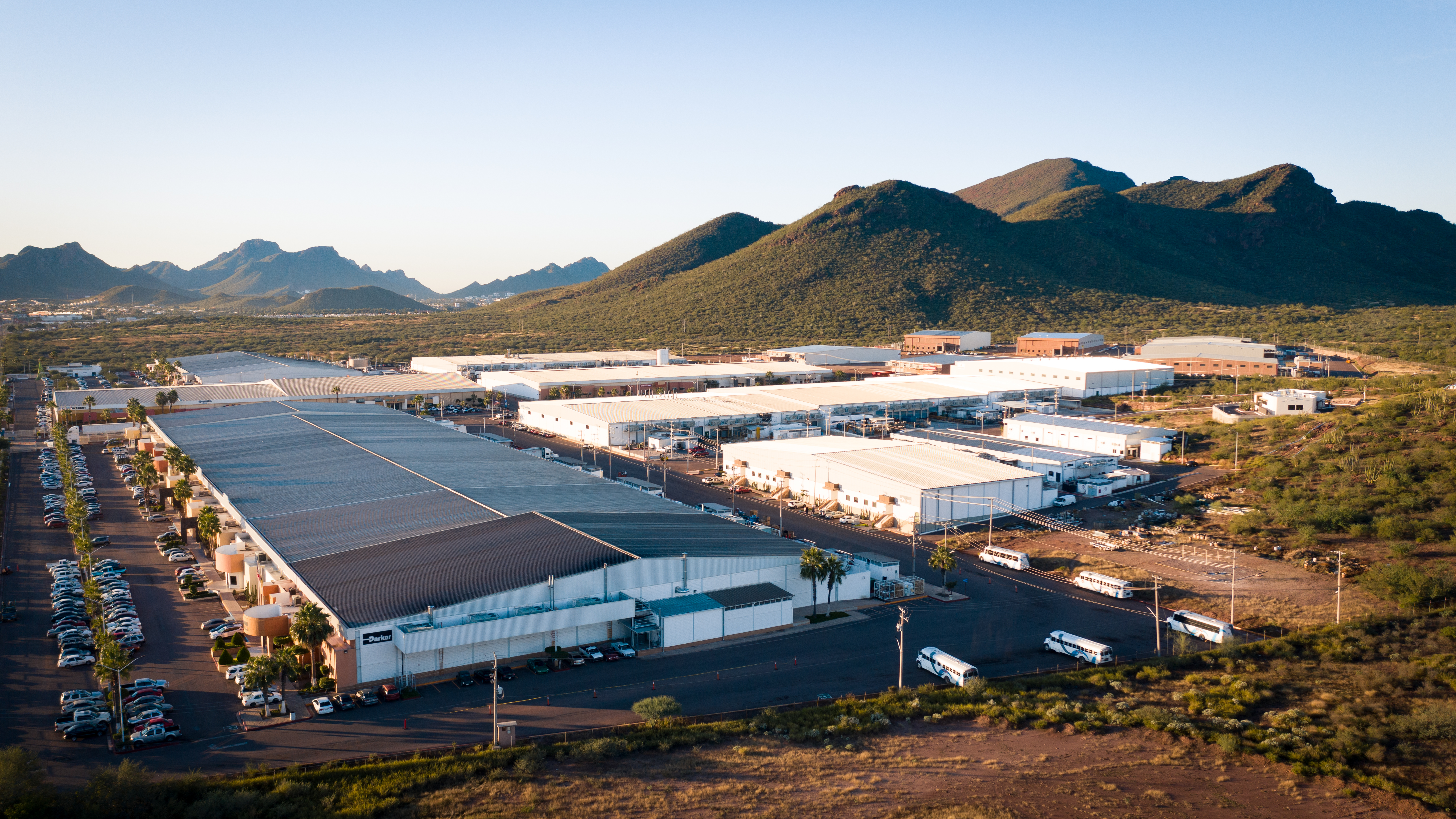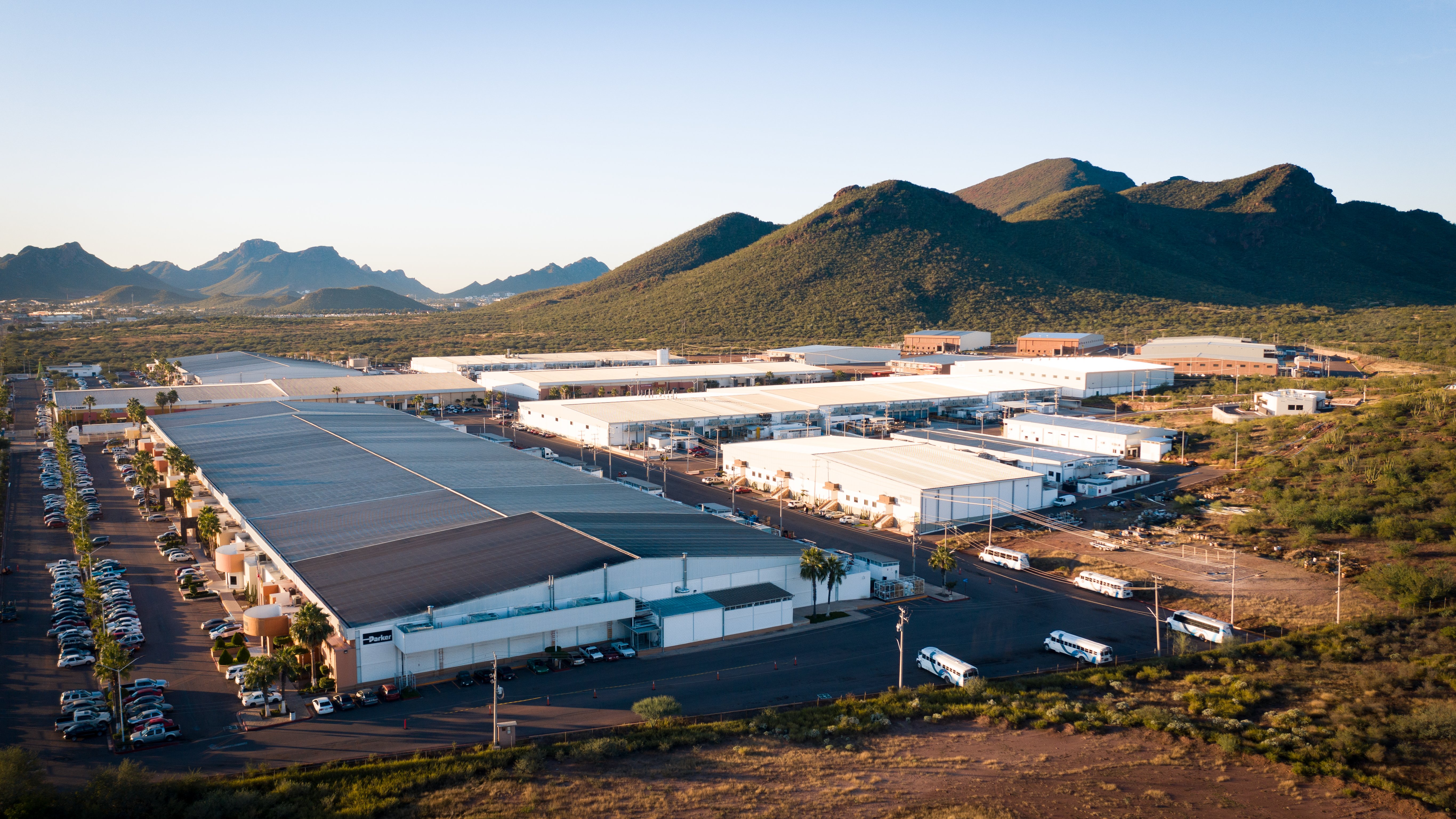By Tonya Vinas
For aerospace manufacturers in Mexico, the news for 2012 is good and great.
First the good news: According to the Aerospace Industries Association, demand in the commercial sector should offset any declining demand on the military side. Additionally, aerospace hiring should be up slightly, and exports will increase after two years of dropping.
Now for the great news: The expanding Roca Fuerte Industrial Park just six hours from Tucson, Ariz., is helping aerospace companies that are manufacturing in Mexico to win new customers, better serve existing customers, and increase profitability.
In the State of Sonora in Northwest Mexico, aerospace-related manufacturing has been growing at 25 percent a year for the past five years, according to the Economic Development Council for Sonora. The number of companies serving the aerospace supply chain from Sonora has grown from 21 in 2007 to 45 in 2011; and employment in the sector has more than doubled at the same time, from 2,520 to 7,000.
Much of the growth has happened during a downturn in commercial-aircraft production, and just as pent-up demand is prompting positive projections, Sonora is expecting its aerospace manufacturing in Mexico clusters to grow even faster.
“Several new commercial aircraft from Boeing, Airbus and Bombardier — along with new aerospace engine-development programs — are fueling the aerospace supply chain,” said Claudia Elena Gautrin Bravo, speaking for the Economic Development Council for Sonora. “The goal of the State of Sonora is to maintain its leadership in the segment of aero-engine components manufacturing in Mexico, and to gain a larger presence in the aero-structure segment. We plan an increase of 33 percent of our aerospace employment, exceeding 10,000 jobs, by the end of 2013.”
Sonora, Mexico is attracting companies such as INCERTEC, a specialty plating, metal finishing, and engineering-solutions company based in Fridley, Minn. The firm purchased a plant at The Offshore Group’s Bella Vista Industrial Park in Empalme, Sonora, in September 2011 and will be investing $1.2 million to move some processes there from Minnesota, where both capacity and labor constraints make it difficult to fulfill demand. (The Offshore Group provides third-party outsourced manufacturing support, or “shelter,” services to companies operating in the Guaymas and Empalme, Sonora, aerospace cluster and elsewhere in Mexico.)
According to Tim Meador, INCERTEC president and CEO, the company runs one shift a day with 16 employees in Empalme, but he expects that to increase to three shifts a day with 100 employees within a year.
“In the industries we serve, precision is critical,” Meador said. “By adding this location, we can provide manufacturers doing business in Mexico the same consistency, quality and delivery provided by our U.S. location. Operating under The Offshore Group’s ‘shelter plan,’ will enable us to focus on our core manufacturing competencies.”
Additionally, INCERTEC will serve California customers from its Empalme, Sonora, location.
Labor, Capacity Helps U.S. Companies Grow
Meador said this is not a case of a company moving jobs from the United States to another country because of ultra-cheap wages. INCERTEC’s business is up 20 percent year-over-year, and it needs more capacity to serve customers in locations where they, too, are expanding. The Empalme, Sonora, location not only enables the company to fill current and future demand, but it also provides a manufacturing-focused workforce that is abundantly available. In the Twin Cities region of Minnesota, unemployment is below the national average at 6 percent, and there is a shortage of skilled labor.
Availability of a trainable manufacturing workforce and room to grow are crucial to INCERTEC’s strategy — providing highly precise, certified plating services in Mexico, which are in increasing demand as parts and components become more complex due to technical advances and demand variation.
“We have a company that we plate a plastic part for. That company searched for three years to find someone to plate that part,” Meador said. “They found a French company that can do 17 a week. The demand is 850 a week. We currently are doing 500 a week. I don’t have enough space in Minnesota, so we’re just going to manufacture it in Mexico.”
Scott Livingston, president and CEO of Horst Engineering, also said that his company’s investment in Guaymas, Sonora, fits into a long-term growth strategy as a global provider. While it’s true that aerospace production workers in Mexico make less money than their U.S. counterparts (skilled workers such as engineers are on par), that’s just one way that being in Sonora benefits the company. East Hartford, Conn.-based Horst has been in Sonora since 2006.
“I was looking for growth opportunities and wanted to be more global,” Livingston said. “Boston is good area for knowledge, but it is a high-cost environment.
“We looked at environments all over the world and came back to the aerospace manufacturing in Mexico option, because we felt that for a high-mix, low-volume product in a high-precision environment with a significant North American customer base, that it would give us significant opportunity — opportunity to transfer some product that we may not have been as competitive on in the U.S. that we were doing for existing customers; and it would give us access to a new labor pool that was manufacturing-oriented. We’ve seen considerable shrinkage of the manufacturing labor force in Connecticut, and we’re training people from scratch here anywhere. So we figured we could do that in Mexico.”
Livingston said the Guaymas, Sonora plant also exposed Horst to new suppliers, added more physical plant space, and gave the company access to new customers and new markets.
“People are interested in doing business in Mexico,” he said.
Building An End-To-End Aerospace Supply Chain
Co-location is essential to modern aerospace production because it requires a wide variety of value-adding services. While a vertically integrated model has worked in the past, a decentralized approach is more competitive today, and this is why supplier clusters such as those in Guaymas and Empalme have coalesced. Although, the Sonora cluster as a whole doesn’t yet offer a complete local supply chain.
“There needs to be a high concentration of companies in order to satisfy the complete needs of the typical OEMs,” Livingston said. “We outsource several special processes, and in Connecticut, they are all local suppliers. In Mexico, they aren’t there yet, but they don’t even exist in far-flung parts of the world. It’s many small and midsize companies collaborating through supply chains, and Sonora is trying to supply this. We felt that would happen quicker in Sonora than in other parts of the world.”
Gautrin Bravo of the Sonora Economic Development Council said her organization is continuously working the value chain, upstream and downstream, to bring more companies in. That has been challenging for suppliers that must make large capital investments.
“The efficiency of a cluster revolves around its integration,” she said. “The early investments in Sonora and Mexico came with greater ease than the more complex investments required to complete the supply chain. It is difficult to create the proper commercial conditions to attract these highly desired investments. Our goal is to be a catalyst between the various participants of the supply chains so we can create the proper conditions.”
A big step toward a more complete aerospace supply chain happened in the fall of 2011 when worldwide thermal-processing specialists Bodycote opened the first vacuum-brazing and heat-treatment facility in the Guaymas region. The facility provides a more cost-effective option for manufacturers within the area, enabling them to provide complete processing without transporting parts to the U.S.
This streamlines the supply chain so producers can reduce labor and logistical costs, improve turnaround times, and reduce working capital. As the needs of the local market evolve, Bodycote intends to expand its service offering to include additional process capabilities.
Innovative Skilled-Labor Solutions
Another challenge is that Mexico — as the rest of the developed world — is experiencing a shortage of engineers and other skilled labor with production experience.
“I have interviewed several general managers of successful businesses within the maquilas, and universally they comment that there is a lack of skilled/trained workers,” said Paul Cappelli, director of global development for Ducommun Inc., a Southern California company that produces highly complex electronic systems for aerospace customers. “The successful businesses have relied on internal training programs to satisfy their needs for qualified operators.”
And that’s exactly what Ducommun is doing. Through its relationship with The Offshore Group, Ducommun is expanding its current operations in the Group’s Roca Fuerte Industrial Park. With an expected completion of April 2012, the new space will add 40,000 square feet. Part of the expansion plan is extensive internal training for up to 12 weeks per employee.
The Offshore Group and the Economic Development Council are working to improve skilled labor in Mexico in other ways.
“We are in the process of establishing the Sonora Institute for Aerospace and Advanced Manufacturing, which will dispense a series of programs to support our industry, such as conventional and CNC machining, sheet metal, structural assembly, composites, tooling, and more,” Gautrin Bravo said. “The SIAAM will open its first workshops and classrooms in 2012.”
Additionally, The Offshore Group has three training initiatives for which it is working in cooperation with the state government, local public schools and universities, and its client base.
According to Armando Lee, general manager for Offshore Group’s Mexican subsidiary, Maquilas Tetakawi, S.A. de C.V, the company created a manufacturing technology training center, where it can train on a variety of skills such as CNC machining, plastic injection, metrology, lean production and Six Sigma. Open courses are offered for client employees and customized training is developed as requested by clients.
Another initiative started in 2010 and offers teenagers attending public technical schools the opportunity to apprentice at client companies. The program runs for two years and includes one day of hands-on education at a manufacturing site each week and four days of classroom instruction. More than 100 students are enrolled, and indications are that the program will be highly successful. Already, one company has offered a scholarship to study engineering to one of the students.
In another program that addresses skilled labor needs on a deeper level, The Offshore Group is paying for public school teachers to be trained on how to teach applied mathematics. (Traditionally, only math theory has been taught.) The company also lobbied the regional governor to support the program and won his agreement to supply public money to build applied math laboratories at schools. The labs will include modern production equipment that is used in aerospace and other industries.
“We wanted to give something back to the community,” Lee said. “This effort is long term.”
While skilled-labor training takes time and money, companies invested in aerospace manufacturing in Sonora, Mexico, have determined it’s worth the effort. The Ducommun plant is not even a profit center, but the metal and composite bonded aerospace flight control components produced there have enabled the company to win key contracts and fulfill profitability goals.
“The initial phase of our expansion played a key role in winning an extended-period contract with a major customer,” Cappelli said. “The win was based on a cost basis that was made possible through the use of an offshore manufacturing facility.”
Additionally, the product has been delivered directly to the customer for the last 22 months at 100 percent quality and 100 percent on-time to customer requirements, Cappelli said.
“Our Guaymas [Sonora] facility has been fully trained and incorporates lean manufacturing principles into all functions, which fully supports our profitable growth initiative. We are committed to continuing our aerospace manufacturing in Mexico effort.”
Subscribe
Sign up and stay informed with tips, updates, and best practices for manufacturing in Mexico.





